Glass plays an essential role in the facade. A facade is a special type of wall. It separates inside from outside. Glass is a uniform material, a solidified liquid. By its property of transparency it opens up our buildings to the outside world. In modern architecture there is tendency to open up our buildings by using very large facades that are as transparent as possible.
In the external wall, glass can be used as a curtain wall or structural glazing.
Glass is not essentially transparent. They are available in several opacities and various textures and finishes.
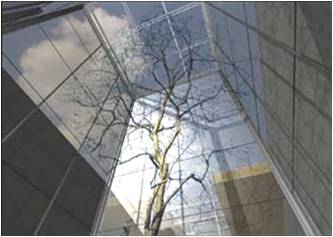
COMPOSITION
Glass is made from the following raw materials: Sand; soda-ash; limestone; dolomite; feldspar; sodium sulphate. These substances are themselves compounds of various elements and a chemical analysis shows that flat glass is made up from the following materials, used in various proportions:
- Silica (S2O2) 71.0 to 78.0%
- Alumina (Al2O3) 0.5 to 1.5%
- Iron oxide (Fe203) 0.05 to 0.15%
- Calcium oxide (CaO) 5.0 to 10.0%
- Magnesium oxide (MgO) 2.0 to 5.0%
- Sodium oxide (Na2O) 13.0 to 16.0%
- Potassium oxide (K2O) 0.0 to 1.0%
- Sulphur trioxide (SO3) 0.0 to 0.5%
- float glass
- sheet glass
- patterned glass
- wired glass
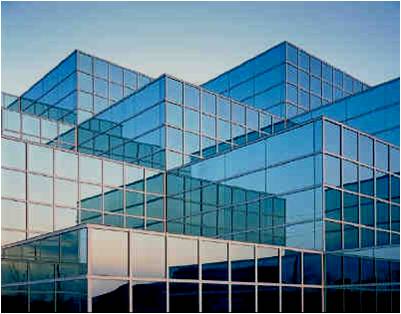
MODIFIED VARIETIES OF GLASS
The basic glass types modified by various techniques to give hybrid varieties:
- Reflective glass
- Insulating glass
- Safety glass
– Laminated safety glass
-Toughened safety glass
- Glass bricks
- Tinted glass, etc…
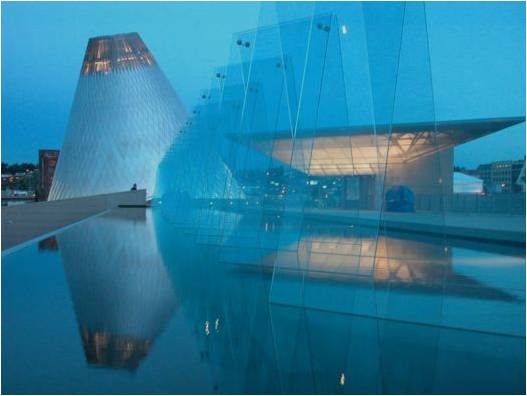
FLOAT GLASS
- Most widely used type of glass
- Monolithic and highly transparent
- Produced by flowing molten glass
- over a bath of molten tin and
- slowly cooling .
- Has uniform thickness, flatness
- and excellent optical quality.
- Manufactured in two main varieties, i.e.; clear and tinted.
- Used in mirrors,windows,curtain walls and doors.
- float glass can be toughened, a process that creates safety glass out of annealed glass.
- Available in thicknesses 2-19 mm
- Can be coloured during manufacturing.
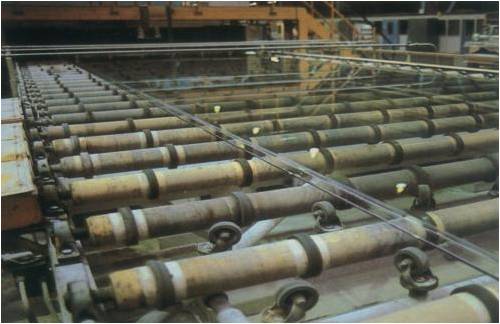
SHEET GLASS…
- There are three different kind of sheet glasses:
– Annealed flat glass
– Processed flat glass
– Misc. glass
- Actual color green (or sometimes blue).
- Sizes available: 2mm, 3mm, 4mm, 5mm,
6mm, 8mm, 10mm, 12mm, 15mm and 19mm.
- Uses: windows,shelves,large size doors and table tops
|
Thickness |
Cost |
|
4-6mm |
Rs 53/sqm |
|
8-12mm |
Rs 63/sqm |
- Sometimes referred to as “figured” or “rolled” glass.
- Has a pattern or texture impressed on one or both sides in the process of rolling.
- This glass surface has a patterned decorative design which provide translucency and some degrees of obscurity.
- Patterns are classified as decorative or glazing i.e., used primarily for their functional properties.
- Uses: decorative glazing of windows, bathroom partitions, door.
- Is difficult to clean as dust settles between the crevices
- Thickness: 4mm, 6mm,
- Sizes: 2140 x 1280 mm, 2140 x 1320 mm respectively.
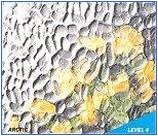
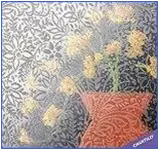
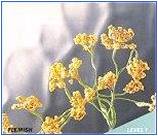
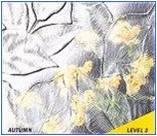
WIRED GLASS…
- Fine twisted hexagonal wire netting or mesh inserted during the process of rolling.
- May be patterned, smooth rolled or ground and polished.
- Used primarily in fire rated windows, doors, skylights and applications requiring a safety glazing material.
- When broken, loose pieces of glass are held by the wire netting.
- Georgian wire mesh, 13mm provided.
- Thickness: 5 to 7 mm.
- Size: 3300 x 1830 mm.
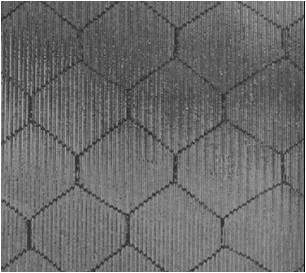
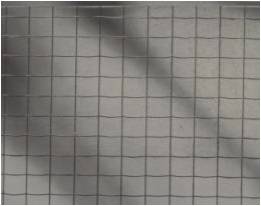
REFLECTIVE GLASS…
- Coating of a metal compound applied on one surface by chemical deposition.
- Reflects light and solar heat
- May be applied on any type of glass and thickness upto half an inch
- Uses: principally used in curtain wall glazing and structural glazing, train windows(AC compartments), doors and windows of commercial buildings, partitions and internal wall cladding.
- Disadvantages: Causes light pollution and is hazardous to traffic.
|
Thickness |
Cost |
|
4-6mm |
Rs 53/sqm |
|
8-12mm |
Rs 63/sqm |
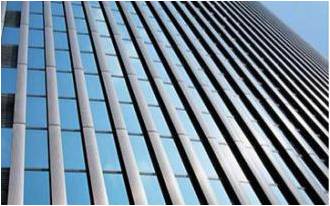
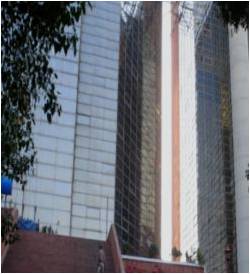
INSULATING GLASS…
- Factory assembled unit consisting of two or more panes of glass separated by air spaces.
- Moisture proof
- The periphery of the air spaces is hermetically sealed.
- There are two types of such sealed units:
- – Organic seal type: Two or more panes of glass separated by air spaces sealed at their edges with an organic seal.
- – Glass edge type: Two sheets of clear single strength or double strength glass fused together at their edges enclosing a nominal 3/16 inches air space. This type of glass is not produced with multiple air spaces.
- Developed basically for vehicular purposes where safety from fracture of glass is a major concern.
- Requirement of uninterrupted vision rules out the use of wired glass.
- Is of two types-
- Made in the form of a sandwich consisting of an interlayer of transparent plastic material such as celluloid between two sheets of plate or sheet glass.
- Celluloid placed between sheets already coated with gelatin and specially prepared enamel.
- Adhesion achieved by applying considerable heat and pressure.
- When one or both sheets of this composite material are broken the glass adheres to the inter layer so that there is no danger from the flying fragments
- Pieces of sheet or plate glass suspended in electric furnace until soft and suddenly cooled by blowing air on both sides.
- Fragments have no cutting edge.
- Toughened glass withstands a dead load more than four times that of ordinary glass.
- Additional compressive stresses in the surfaces makes the glass stronger.
- Can safely accommodate high tensile forces due to the pre-stress.
- Fracture can occur once the pre-stress has been exceeded.
- These are hollow glass units or blocks of glass shaped to work as bricks
- Joined with the help of silicon sealants to obtain seamless finish
- The two outer, exposed surfaces may be smooth or textured.
- Glass blocks can be coloured and have decorated surfaces.
- Walls of glass blocks meeting fire resistance are also possible.
- Found in Indonesian, Sri Lankan, Chinese, USA, German varieties
- Srilankan and Indonesian
- European clear: Rs 350/pc
- Sizes: 71/2 “ by 71/2” by 3 “
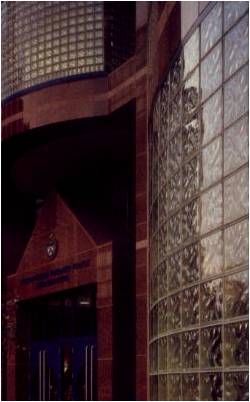
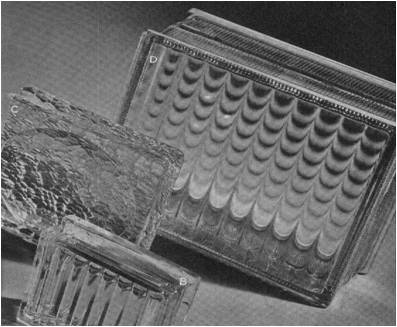
TINTED GLASS…
- Manufactured by adding a dye at the molten glass stage
- Used to minimize solar heat gain and glare while it also absorbs heat.
- Available in grey, bronze, green, blue and blue/green
- Allows for increased control of comfort and energy usage
Sizes available:
- Grey and Bronze – 4mm, 5mm, 6mm,8mm,and 10mm
- Blue – 6mm
- Green – 5mm, 6mm, and 10mm
- Blue/Green – 6mm and 10mm
|
Thickness |
Rate/sq ft (Rs.) |
|
3mm |
22 |
|
4mm |
30 |
|
5mm |
35 |
|
6mm |
38 |
|
8mm |
70 |
|
10mm |
90 |
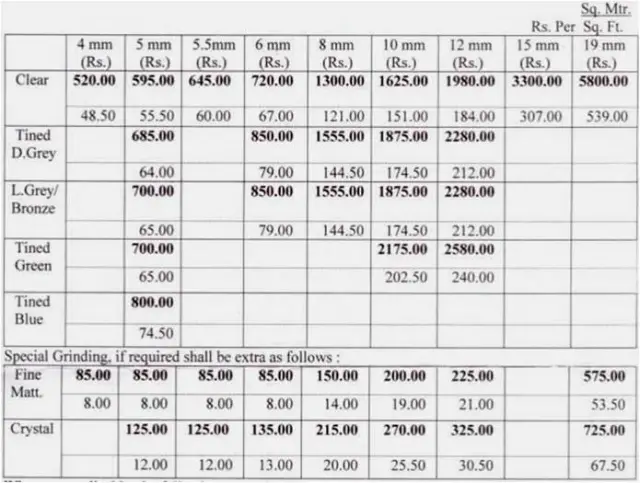
CASE STUDY- LIC BUILDING, C.P.
- LIC building has a curtain wall on its exterior.
- Reflective glass has been used for the curtain wall.
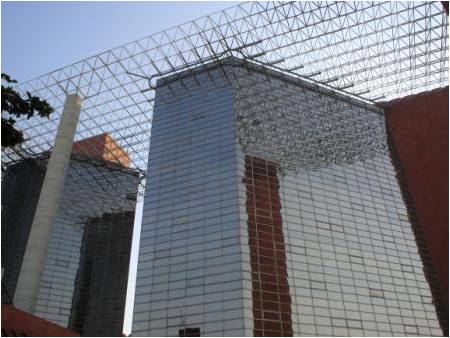
A view the building showing the use of reflective glass and space frame truss
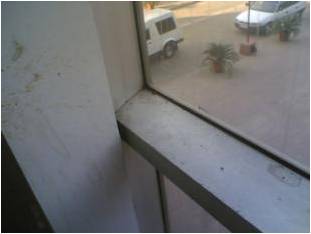
Structural framework of mullions and transoms
JOINERY DETAIL OF VERTICAL MEMBER WITH R.C.C. SLAB
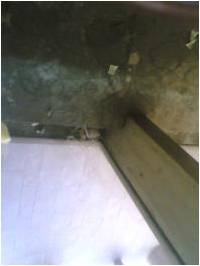
Photograph of the detail

CASE STUDY–DLF SQUARE , GURGAON
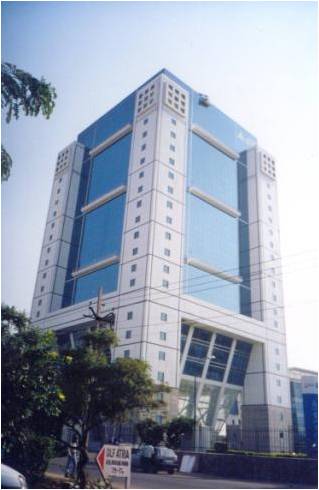
View of DLF Square from the road
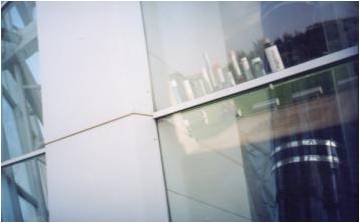
Edge fixing detail
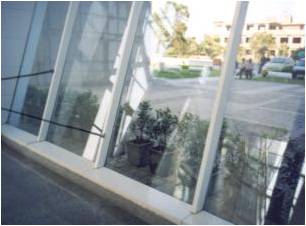
Slanting mullions

As there are no floor slabs, the mullions are attached to steel bracings which run from column to column
BIBLIOGRAPHY
- Glass construction manual by SCHITTICH
- Spindler, R.G., “Architectural Glazing Practices – The Materials, Techniques, and Potential Problems.” ASTM Standardization News, September 1985.
The major companies involved in glass manufacturing:-
- Saint-gobain
- Asahi India
- Goldplus group
- Allied glasses
- Float glass India ltd.
- ASGI India ltd.
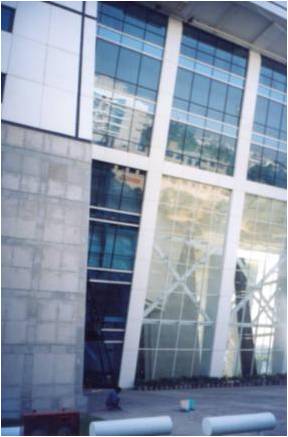
Exterior View Of Lobby
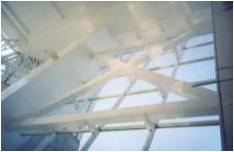
The Steel Cross Bracings.
![[filefield-description]](https://www.archinomy.com/wp-content/uploads/case-studies/2011/glass-fixing.jpg)
Glass fixing at slanting end of Lobby Facade
![[filefield-description]](https://www.archinomy.com/wp-content/uploads/case-studies/2011/spandrel-panel.jpg)
The Service Block is treated like the SPANDREL panel and done up in granite panels.

Leave a Reply
You must be logged in to post a comment.